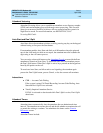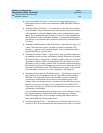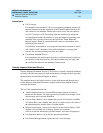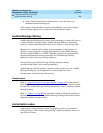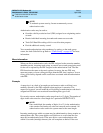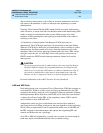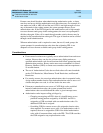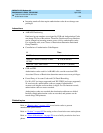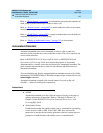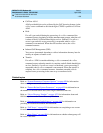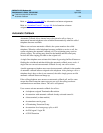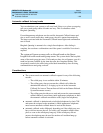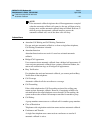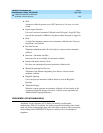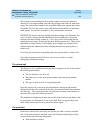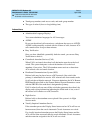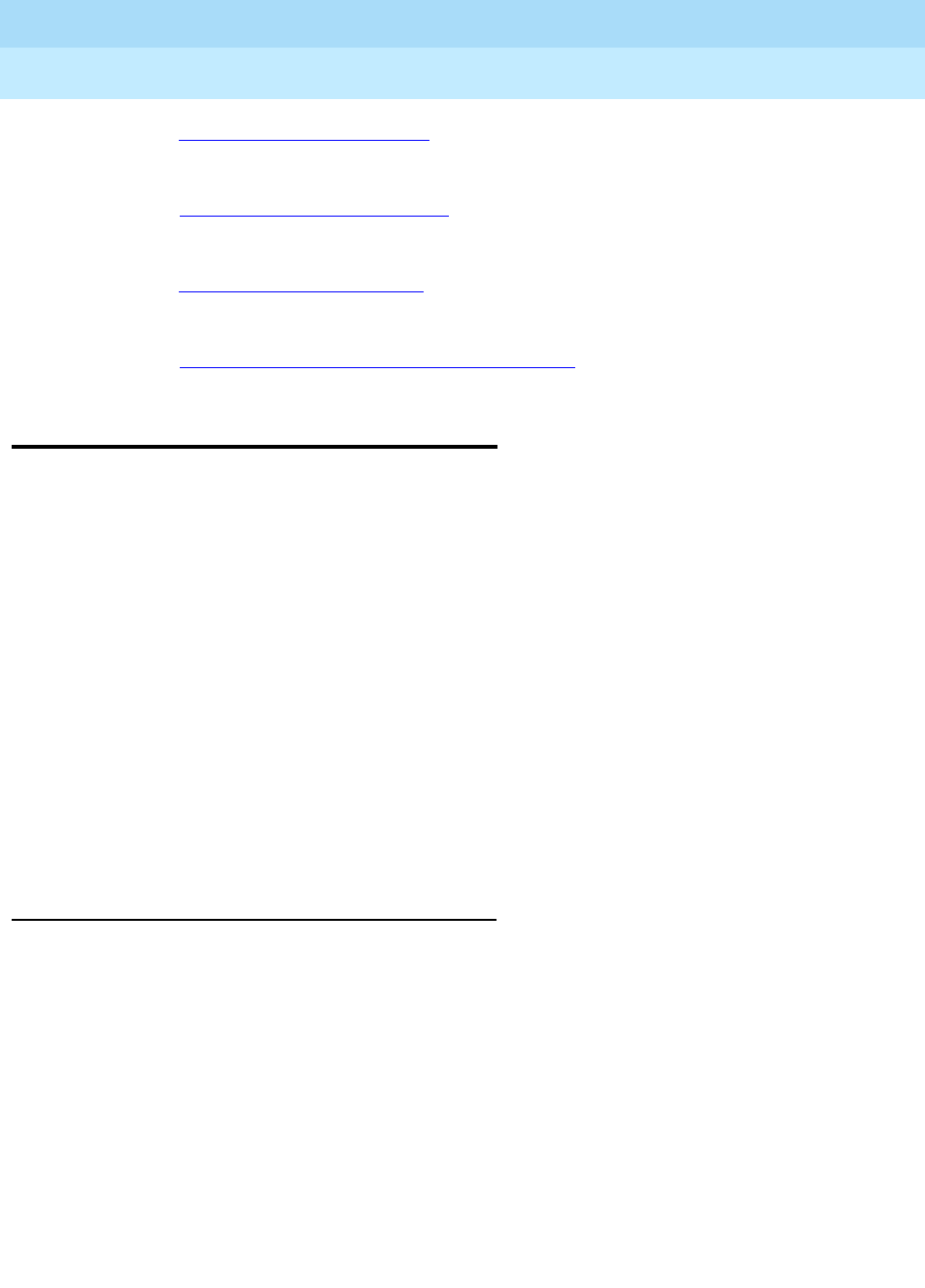
DEFINITY ECS Release 8.2
Administrator’s Guide
555-233-506
Issue 1
April 2000
Features and technical reference
1157Automated Attendant
20
Refer to ‘‘Route Pattern’’ on page 865 for information concerning the sequence of
trunk groups in which an attempt is made to route a call.
Refer to ‘‘
Remote Access’’ on page 857 to permit authorized callers from remote
locations to access your system.
Refer to ‘‘
Trunk Group’’ on page 967 to require an authorization code be dialed to
complete incoming calls on a trunk group.
Refer to ‘‘
Setting up authorization codes’’ on page 331 for instructions.
Automated Attendant
Automated Attendant uses vector commands to allow a caller to enter the
extension of the party that he or she would like to reach. The call is routed by the
vector to that extension.
Refer to DEFINITY ECS Call Vectoring/EAS Guide or DEFINITY BCS and
Guestworks Call Vectoring Guide for a detailed description of Automated
Attendant and for a sample vector that can be used for Automated Attendant. The
guide contains information that is critical to the effective and efficient use of
Automated Attendant.
You can administer any display-equipped phone or attendant console with a Caller
Information CALLR-INFO button. The button displays digits collected for the last
collect digits command.
Automated Attendant competes with several features for ports on the call
classifier — detector circuit pack or equivalent.
Interactions
■ AUDIX
Automated Attendant gives the caller the option of leaving a message or
waiting in queue for an attendant. Refer to “Message Collection” in
Chapter 5 of the DEFINITY Enterprise Communications Server Call
Vectoring/EAS Guide.
■ Authorization Codes
If authorization codes are enabled, and a
route-to command in a prompting
vector accesses AAR or ARS, if the VDN’s FRL does not have the
permission to use the chosen routing preference, then the system does not
prompt for an authorization code and the route-to command fails.



